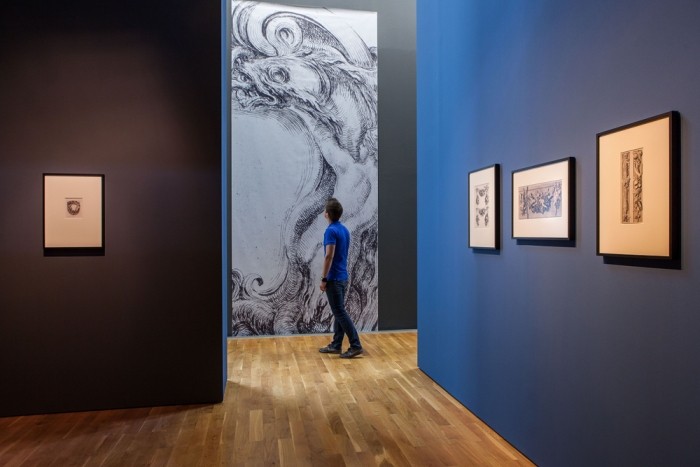Ornament. Perspectives on Modernism
02 Jun 2012 - 06 Jan 2013

Ornament - Perspectives on Modernism Ornamental Prints from Dürer to Piranesi at the Kunstmuseum Wolfsburg (June 2, 2012 to January 6, 2013).
Installation shot
Installation shot
ORNAMENT. PERSPECTIVES ON MODERNISM
Ornamental Prints from Dürer to Piranesi
2 June 2012 - 6 January 2013
Starting with Albrecht Dürer’s famous Knots series, six impressively decorated Renaissance woodcuts, the exhibition unites around 100 precious prints and several ornamented objects from the 15th to 18th century. Most of these art historical treasures come from the comprehensive collection of the Herzog Anton Ulrich-Museum in Braunschweig. The exhibition traces the history and development of the ornament as an art form, making the process, the uninterrupted topicality of the ornament as regards contemporary art particularly evident in the process. Nowhere else are the changes in the universal language of form more evident than in the development of the ornament—a single stylized image that can be strung together at will. Particularly fascinating is the space-forming power of the ornament that as a motif knows no beforehand and no afterwards. In this way, the concepts of area and space oscillate. This idea is essential for the development of art in the 20th century. Particularly the work of the American painter and sculptor Frank Stella, which will be on show at the same time in the large hall at the Kunstmuseum Wolfsburg, draws on the space-forming quality of the ornament. Never before has this extraordinary dialog of form been undertaken in an exhibition venue, to which the Kunstmuseum Wolfsburg devotes a time-transcending context here.
The Kunstmuseum Wolfsburg undertakes in the exhibition a further exploratory drilling into the genetics of modernism, providing a new component to the museum’s general scholarly theme: “The Future of Modernism.”
A cooperative project with the Herzog Anton Ulrich-Museum in Braunschweig.
Ornamental Prints from Dürer to Piranesi
2 June 2012 - 6 January 2013
Starting with Albrecht Dürer’s famous Knots series, six impressively decorated Renaissance woodcuts, the exhibition unites around 100 precious prints and several ornamented objects from the 15th to 18th century. Most of these art historical treasures come from the comprehensive collection of the Herzog Anton Ulrich-Museum in Braunschweig. The exhibition traces the history and development of the ornament as an art form, making the process, the uninterrupted topicality of the ornament as regards contemporary art particularly evident in the process. Nowhere else are the changes in the universal language of form more evident than in the development of the ornament—a single stylized image that can be strung together at will. Particularly fascinating is the space-forming power of the ornament that as a motif knows no beforehand and no afterwards. In this way, the concepts of area and space oscillate. This idea is essential for the development of art in the 20th century. Particularly the work of the American painter and sculptor Frank Stella, which will be on show at the same time in the large hall at the Kunstmuseum Wolfsburg, draws on the space-forming quality of the ornament. Never before has this extraordinary dialog of form been undertaken in an exhibition venue, to which the Kunstmuseum Wolfsburg devotes a time-transcending context here.
The Kunstmuseum Wolfsburg undertakes in the exhibition a further exploratory drilling into the genetics of modernism, providing a new component to the museum’s general scholarly theme: “The Future of Modernism.”
A cooperative project with the Herzog Anton Ulrich-Museum in Braunschweig.
